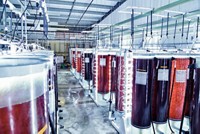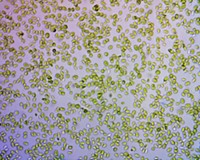Advertisement
Grab your lab coat. Let's get started
Welcome!
Welcome!
Create an account below to get 6 C&EN articles per month, receive newsletters and more - all free.
It seems this is your first time logging in online. Please enter the following information to continue.
As an ACS member you automatically get access to this site. All we need is few more details to create your reading experience.
Not you? Sign in with a different account.
Not you? Sign in with a different account.
ERROR 1
ERROR 1
ERROR 2
ERROR 2
ERROR 2
ERROR 2
ERROR 2
Password and Confirm password must match.
If you have an ACS member number, please enter it here so we can link this account to your membership. (optional)
ERROR 2
ACS values your privacy. By submitting your information, you are gaining access to C&EN and subscribing to our weekly newsletter. We use the information you provide to make your reading experience better, and we will never sell your data to third party members.
Environment
Good-bye, Phosphates
March 14, 2011
| A version of this story appeared in
Volume 89, Issue 11
The cover story on dishwashing detergent is comprehensive and well written but would benefit from including a few facts that were not mentioned (C&EN, Jan. 24, page 12):
1. This is not a new emergency. The detergent and chemical industries have been searching and testing for so-called builder replacements for sodium tripolyphosphate for over 50 years, a very long time, since the first bans were enacted. Evidently, none of the many patented products have made the grade so far.
2. The claim that etidronic acid, or 1-hydroxyethane-1,1-diphosphonate (HEDP), is as effective at 0.5% phosphorus as sodium tripolyphosphate at 7% implies a 14-fold effectiveness multiplier, which would be hard to document. Although it is photodegradable, etidronic acid is not biodegradable, and its toxicology (it and similar phosphonates have drug uses) is somewhat questionable.
3. Polycarboxylates are also nonbiodegradable but appear harmless in the environment.
4. The failings of the new nonphosphate dishwashing detergents are not just cosmetic. The Consumer Reports data suggest that they are deficient in food residue removal and hence in sanitation. Could there be added unfavorable publicity when the first biofilm accident occurs, especially in the industrial and institutional field of hospitals and restaurants where sanitation is essential?
5. Phosphates are not only a “wonder ingredient” in detergents, they are present in DNA; in human and animal milk, cheese, and meat; and in every food.
6. Could it be that the activists’ campaign to ban phosphates is not environmentally sound? They argue that phosphates cause aquatic plant growth. Indeed, the raw material for photosynthesis or plant growth is atmospheric carbon dioxide, which is at an all-time high in the atmosphere, actually accelerating photosynthesis if phosphates, essential for life, are available. Phosphates in off-waters would result in lowered atmospheric carbon dioxide. One can calculate substantial quantities from published equations of the type (phosphoric acid) + (carbon dioxide) = (biomass).
Edwin A. Matzner
St. Louis




Join the conversation
Contact the reporter
Submit a Letter to the Editor for publication
Engage with us on Twitter